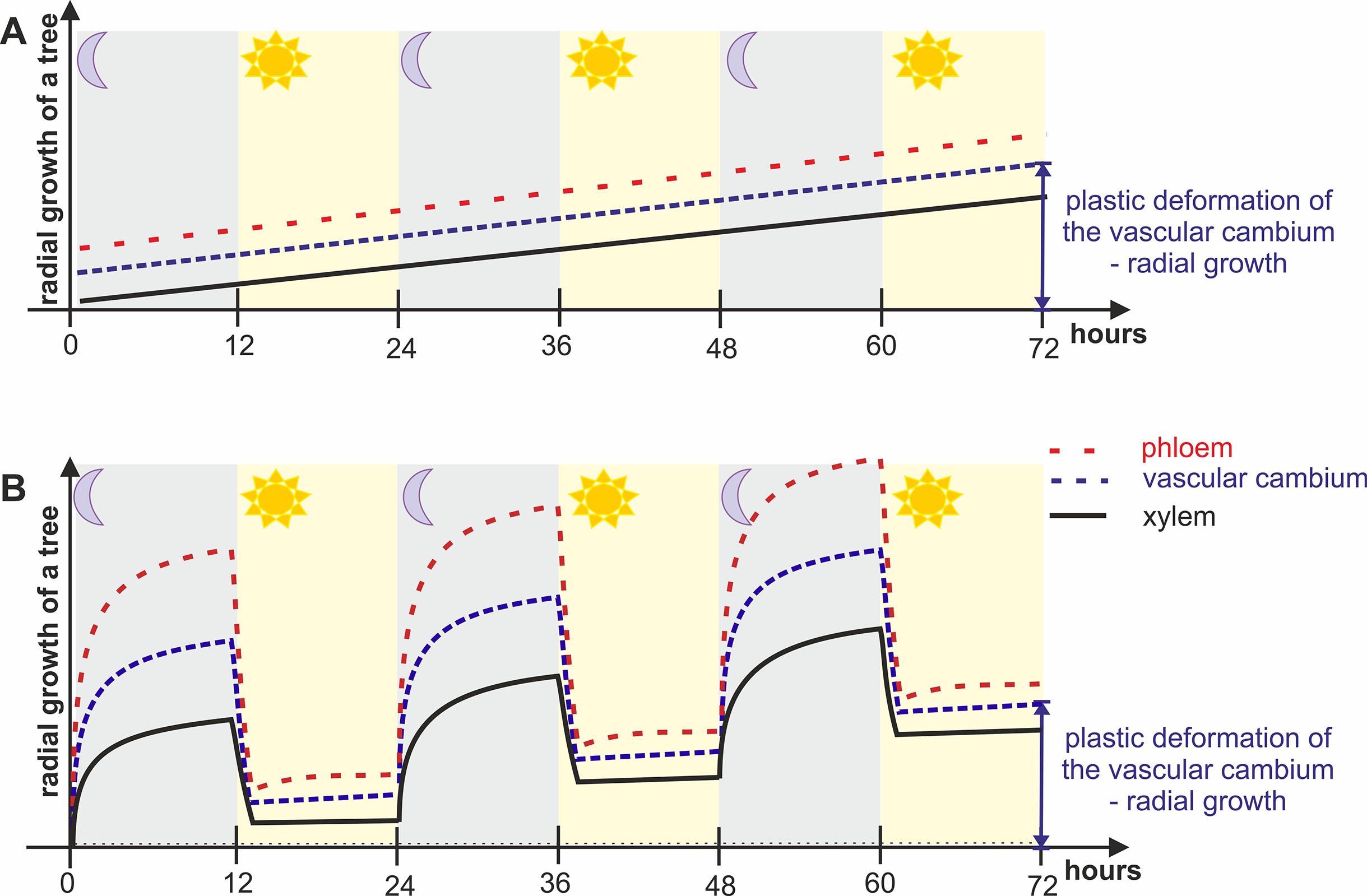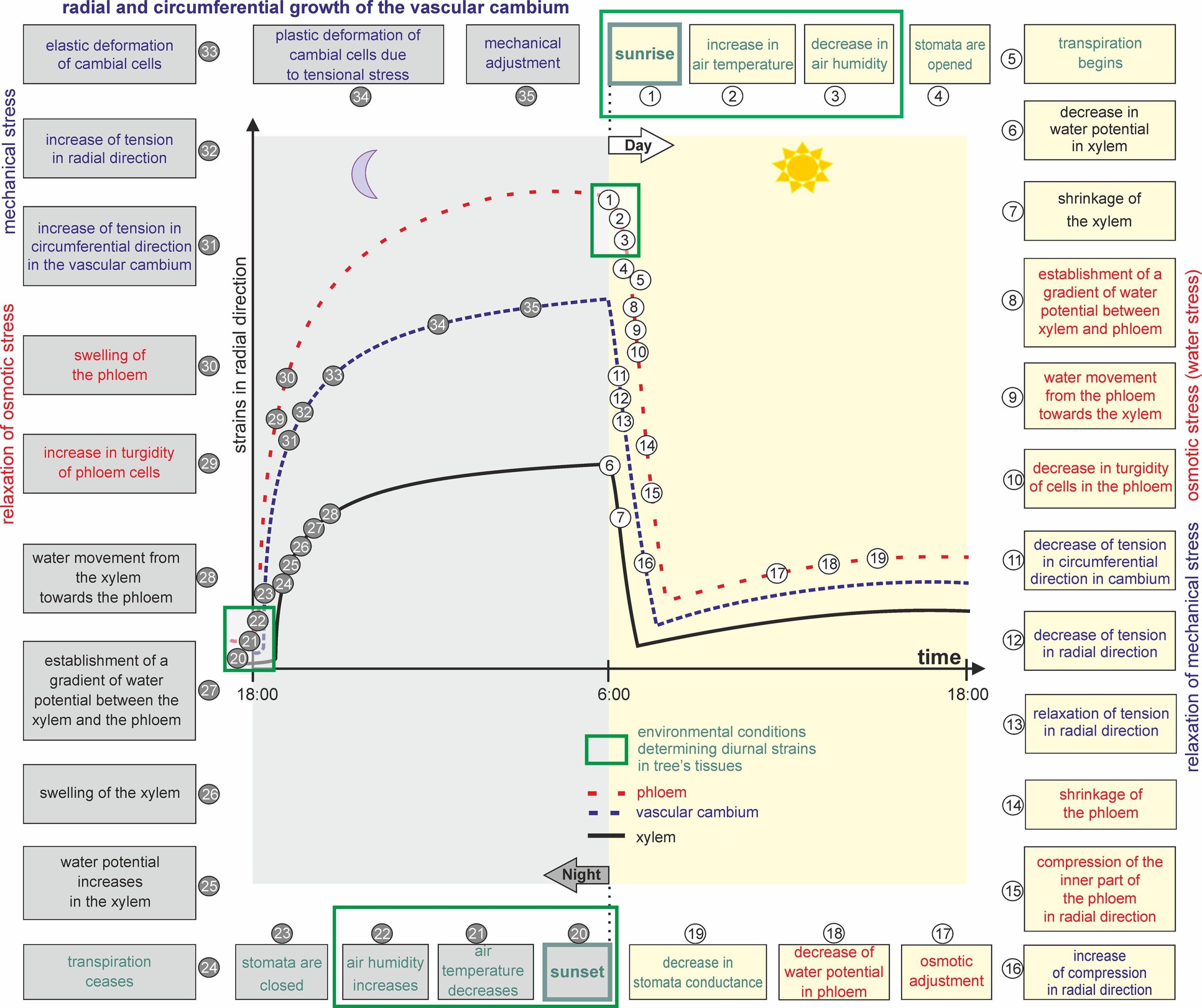In the magazine Forests A paper was published to present a new hypothesis of radial growth of deciduous trees based on the mechanism of circadian deformation of plant tissues. The vascular cambium is the main lateral meristem responsible for the secondary growth of trees. Through the prism of the proposed hypothesis, this process can be understood as an adaptation to cyclically changing mechanical stresses acting in the radial direction. These stresses are generated by the phloem in a 24-hour diurnal cycle and cause the cambium, in the radial direction, to undergo nighttime stretching and daytime compression. In this system, the phloem acts as a hammer and the wood as an anvil. This hypothesis points to transpiration as the source of the energy that drives this mechanical system (which operates thanks to the large difference in water potentials between the plant and the environment that changes during the circadian cycle).
The hypothesis focuses exclusively on symplastic growth. In this form, it provides an alternative explanation of the radial growth process to the one currently in place and paves the way for a better interpretation of such phenomena as early and late wood formation.
Kojs P., Miodek A., Miodek A.P., Italian W. 2023. Vascular Cambium - Between the Hammer and the Anvil: A Tensile Stress Hypothesis on the Mechanism of Radial Growth of Broadleaved Trees. Forests 14(4): 823. https://doi.org/10.3390/f14040823


post
post
2023-04-21 12:06:37

